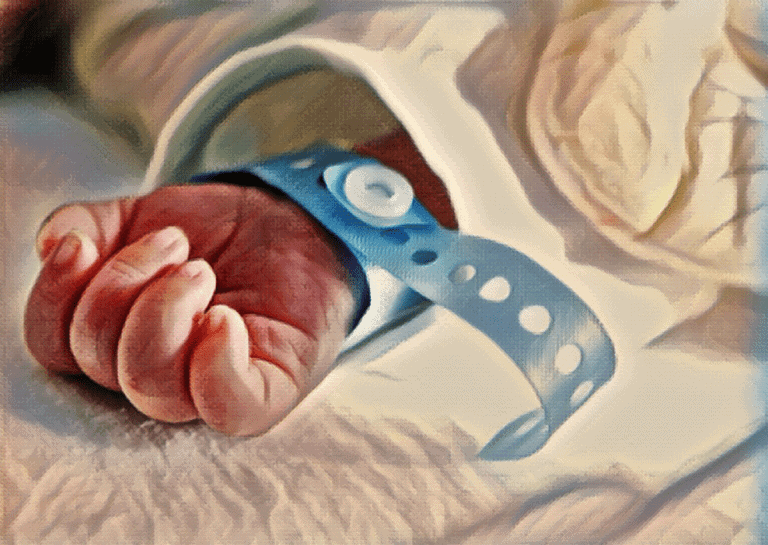So, you’ve had your baby. Congratulations! There will be so many wonderful firsts throughout the years, but in this article, we’ll cover your baby’s first test. Don’t worry. This test won’t be anything like the Math or English homework you’ll be helping your child with later.
What I’m talking about is newborn screening.
We’re going to cover the ins and outs of the newborn screening process, when you should expect these screenings to take place, and how to find out the results of your newborn screening.
Table of contents
The Purpose of Newborn Screening
The purpose of a newborn screen is to detect disorders that are life-threatening or will impact the long-term health of your child. In the United States, screening is provided universally for every infant born each year, around four million in total. If you don’t live in the United States, don’t worry. Screening is incorporated into the healthcare systems of all developed countries.
In the U.S., screenings are run at a state level, meaning there could be slight differences based on where you live. While there may be slight differences, the United States Secretary of Health and Human Services established the Recommended Uniform Screening Panel to minimize any extreme variability across states. Essentially, the RUSP is a list of conditions that should be included in all newborn screen programs. If you want to know how it’ll differ by location, you can find information specific to where you are at the Baby’s First Test website.
When Screenings Take Place
Healthy newborns delivered in birthing centers and cared for in the nursery will have their blood spot specimens obtained through a heel prick during birth hospitalizations close to the time of hospital discharge. This method allows for the screening to be performed when abnormal compounds are most likely to be present, meaning it’s the greatest chance for a positive result to be detected if a disease is present.
The screenings have individualized recommendations for premature or sick newborns and could vary in timing and number of studies. While delayed screening places ill or premature infants at a greater risk for developing identifiable diseases that can receive early clinical treatment, it’s possible that false-positive results are more likely based on when they’re tested. For births outside of hospitals, it’s essential to make sure your newborn is screened at your clinic.
Being Informed of Results
It can vary by state. In some cases, the testing laboratory will inform your pediatrician and birth hospital of the results, who will relay that information to parents. In other states, local health department staff hold the role of finding and sharing results.
In most states, it’s required that a healthcare professional be notified of the results. However, this could potentially be the clinician at the newborn’s birth hospital and not the pediatrician providing long-term care. Again, the Baby’s First Test website is a beneficial resource to help you understand the requirements and regulations of your state. You can also direct any questions to your healthcare provider.
How Common Are Positive Results
Of the four million or so infants screened every year in the United States, around 12,500 are diagnosed with one of the core conditions on the RUSP uniform screening panel, a one in four thousand detection rate in live births. Of those detections, some of the commonly diagnosed conditions are hearing loss, primary congenital hypothyroidism, cystic fibrosis, and sickle cell disease.
If your newborn’s screening produces positive results, follow-up testing will be done to confirm the results are accurate. Your primary care provider or pediatrician is responsible for ensuring all necessary screening has taken place and that any positive results are followed up on until an official diagnosis can be confirmed or excluded.
False Positive and Negative Results
False positives are possible and are more common in preterm infants with a gestational age of under 32 weeks being screened for hypothyroidism and adrenal hyperplasia before 48 hours of life. That’s why follow-up testing is key to determining the accuracy of any positive results.
While testing negative is a relief, it’s important to remember that disorders could still be present or develop later on. In particular, false negatives are more likely to occur in premature infants, those who received blood transfusions or dialysis or were tested too early, under twenty-four hours of age. That’s why it’s crucial to stay vigilant even in the case of negative results.
In both cases, it’s essential to have a pediatrician you trust and feel comfortable asking questions. It’s their job to ensure you’re fully informed about any present risks and the screening process.
What Happens After A Positive Diagnosis
While it may feel overwhelming, your pediatrician will help you navigate the next steps. It’s certainly not a reason to panic. As mentioned before, follow-up testing will be done to confirm the positive result and diagnosis, as false positives are possible. There are treatable conditions, and identifying anything early on will better prepare you to care for and provide early treatment for your newborn to prevent the condition from leading to significant problems. Several conditions can improve dramatically when caught early. It’s also common after the diagnosis of a newborn for first-degree family members to be tested to determine if they’re carriers or affected by the same genetic condition.
As you can see, screening plays a serious role in identifying any conditions in your newborn early on, providing a greater chance of giving them a longer and healthier life. If you do suspect your infant is showing a symptom of a condition not caught by the screen, it’s important to continue monitoring with the support of your doctor.
Staying on top of any suspected symptoms and recommended screenings and vaccinations can also help the prevention of any serious conditions from developing. And no matter what results you receive after your newborn’s screening, know there are plenty of systems in place to support your mental and physical health as you step into parenthood.
